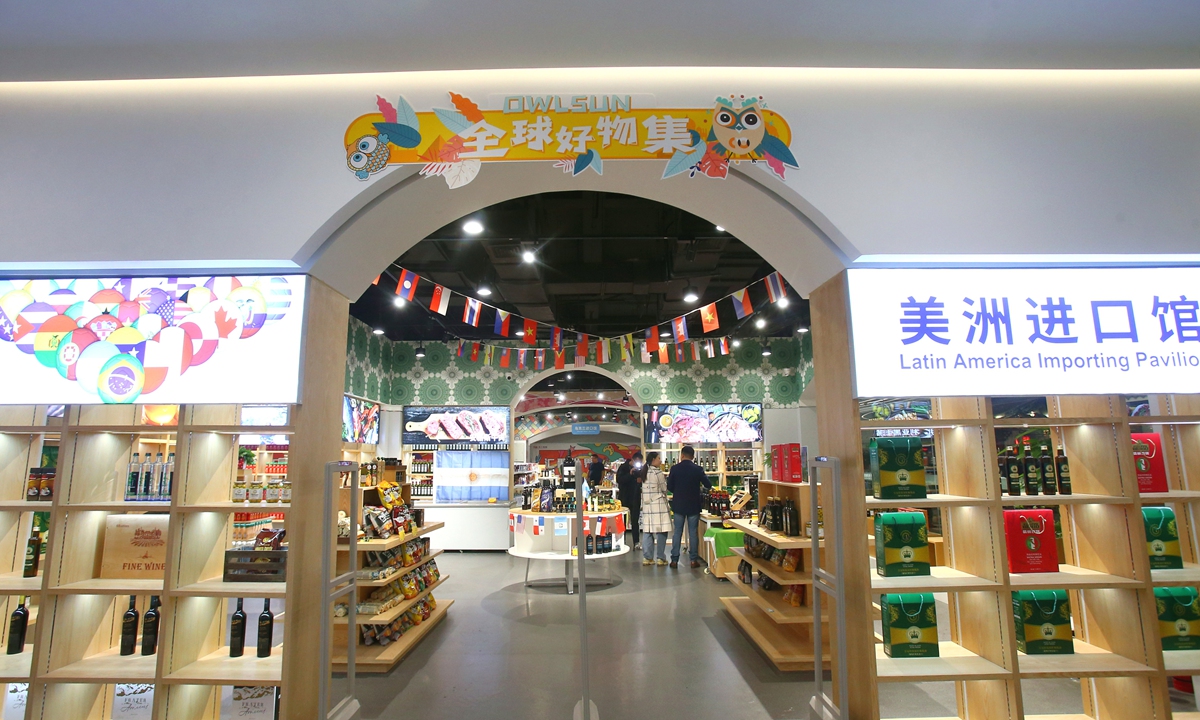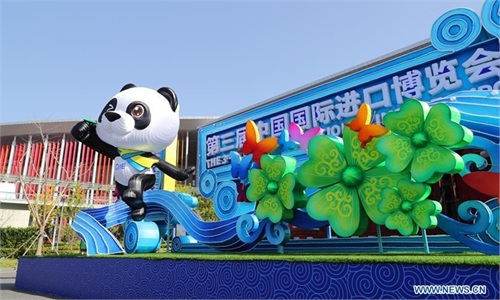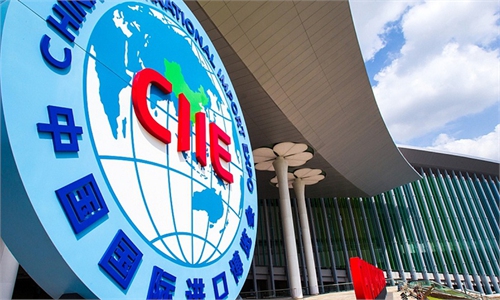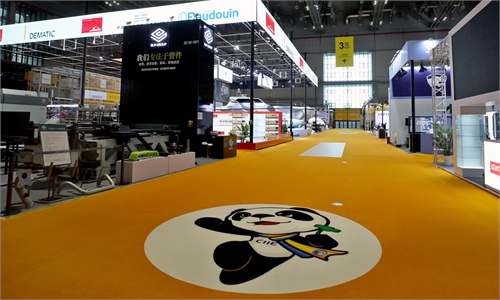Import fair a golden opportunity to revitalize consumption market
Import exhibition a golden opportunity to revitalize nation’s consumption market

The Latin America Importing Pavilion at Shanghai Waigaoqiao Free Trade Zone, the first FTZ established in China. The mall is also an extension of the CIIE, as many products displayed at the country's first import-themed national level expo will then be sold here. Photo: Yang Hui/GT
Determinedly charging along the path of consumption-driven development, China kicked off its third international import event on Wednesday. With the pandemic-induced battering of domestic consumption ebbing, the opening of the China International Import Expo (CIIE) is set to inject more vitality into domestic demand.
The consumer goods exhibition area for this year's CIIE totals 90,000 square meters, far exceeding the plan, according to the press office of the Shanghai municipal government on Wednesday.
More than 800 companies, including more than 30 of the Global Fortune 500 enterprises and industry leaders, will show their state-of-art technologies and products.
The world's top seven vehicle groups will all appear in the auto area, with 30 new products and technologies that will make debuts. In conjunction with the highlighting of the prevention and control of the COVID-19 epidemic, a public health and epidemic prevention zone has been set up in the medical equipment area.
The display zone for Japan's chemical and cosmetics company KAO Group exceeds 500 square meters.
"At a time when the world is stuck in sluggish demand as a result of the pandemic, we see that China is the market that grows the fastest and recovers the best. Now, it definitely is the market that offers the best business performance for us," Chiyu Yoshiba, director of the Asia business management at Kao, told the Global Times.
"We feel that the pandemic has fueled rising demand for many products, like cleaning products, in China. We have also seen that the government has ramped up investment to stimulate China's domestic demand. Both have made us more confident and optimistic about the Chinese market," he said, adding that the company will stick to China by investing more in the market.
Clarence Mak, president of Mars Wrigley China, also marveled at the "strong resilience" of the Chinese consumption market. "After a very short correction [because of the coronavirus disruption], China's market has, in my eyes, shown clearer trend of digitalization and customization. The new trends have also brought many market opportunities and vitality to the consumption-oriented market."
He told the Global Times that the Chinese market is acting like a "growth engine" of the company's overall business, and Mars is working to achieve a growth rate in China that outpaces its average global market growth. He didn't disclose specific sales figures in China.
The US-based multinational candy producer attended the CIIE in 2019 and 2018. According to Mak, the CIIE has been a good display window and platform for the company. Many items in past exhibits have now entered the Chinese market. Mars also remains in close contact with companies that showed an inclination to do business with it during past CIIEs.
The import expo has provided a golden opportunity, especially during the pandemic, not only for foreign businesses that are making an attempt to move into the Chinese market and expand, but also for China to promote its international cooperation, said Li Jun, director of the Institute of International Trade in Services at the Chinese Academy of International Trade and Economic Cooperation, a think tank under the Ministry of Commerce.
With the just-released 14th Five-Year Plan (2021-25) highlighting the "dual circulation" model of growth - internal circulation, referring to domestic economic activities, will be taken as the mainstay and complemented by external circulation - the domestic market is set to be the engine driving economic growth.
Gradually steering away from export-driven growth model that China pursued in past decades, the country is relying on internal demand to fire up economic growth.
The CIIE comes at a moment when the pandemic is keeping affluent Chinese middle class from shopping and traveling overseas, and their pent-up consumption demand could be released as the event brings many quality imports to the domestic market, Li told the Global Times on Wednesday.





